At a loss as to how you can improve your business? Then ask your customers. C-Store looks at different customer feedback techniques and how retailers are putting shoppers’ suggestions to good use.
When you’re living and breathing your business 24/7 it’s impossible to pick up on every possible opportunity to improve the store. And this is exactly why it makes sense to ask the people who use your shop every day for their insight.
“Data alone isn’t always accurate,” says Anjali Karpal, who owns Essential Convenience Store and Anjalika in East Grinstead, West Sussex. “You can only follow the figures to a degree; every store is different, so you have to tailor it to your customers. You should always talk to customers and get whatever information you can out of them.”
Keith Potter, store supervisor at Scotmid Barnton in Edinburgh, is a strong believer in asking customers their thoughts. “Customer feedback is important so as we can meet customer needs by improving the store and keeping customers coming to us. We have a Sainsbury’s two doors away, so there’s all the more reason for us to respond to what customers want.”
“A suggestion box is a good way of encouraging customers to give feedback on their shopping experience. We’ve just put up a new box as the last one wasn’t in a great location - it was by the door and people were just walking past it. We’ve now moved it to under the noticeboard by the till point, which is an area people look at anyway. We’ve also changed the box itself.”
Sheena Whitehouse, Sales Assistant of the year 2013
He claims that asking customers for their feedback shows them that they are important. “The supermarkets don’t talk to people, whereas by chatting to shoppers and asking for their views, the customer really feels that they are being listened to.”
Jai Singh, of Singh’s Premier in Sheffield, heartily agrees. “Ultimately, it’s your customers that make the business. They need to feel valued. It’s easy to take customers for granted if the store is doing well, but if you get increased competition, you’ll need to ensure you have them on your side.”
Reacting to customer requests can help to give you the edge over rivals, adds Susan Connolly, business development manager at four Connolly’s Spar stores in Wiltshire. “It’s not like walking into Tesco and asking for something where generally staff don’t have the product knowledge and they wouldn’t get a product in especially for a customer. Their product range is generated from last year’s sales, rather than customer requests. With us, customers can ask for a product on a Monday and we’ll usually have it in by Wednesday.”
However, retailers need to ensure that they are able to respond to feedback, or it can do more harm than good. “If you ask for feedback and you can’t act on it then you can get a negative response,” warns Jo Buist of Chilbolton Village Stores, Hampshire. “It’s a double-edged sword really - if you start asking people what they’d like to see in the store, they want the world and you’ll get comments like ‘keep the store open 24/7’.”
Jo believes that asking customers for feedback is largely a positive move, though. “The best thing is to just engage with customers and let them know that you are open to feedback. In a lot of cases, customer feedback makes sure that you’re going in the right direction.”
Ask them face to face
Jo is convinced that simply asking customers face to face for their views is the way forward. “We find that face-to-face feedback is the most effective,” she says. “The most useful feedback for us is if someone tells us that they went to a local farmers’ market and bought a product that they would buy from us if we stocked it. Most of our new suppliers are picked up in that way. We’ve recently started stocking My Chocolate Gallery as a result of customer feedback. They make handmade truffles and chocolates and they’re going down really well.”
“A few staff members went along to the local Slimming World weight loss classes, which a lot of our customers attend. We spoke to the members and found out the types of meals they were looking for - such as low-fat burgers, spaghetti Bolognese and soups - and then we made them in bulk and sold them at the deli counter as part of a new slimmers’ range.”
Sheena Whitehouse, Sales Assistant of the Year 2013
Anjali also opts for the direct approach. “If someone comes in and looks around and then goes to leave I’ll ask them what they were looking for.” This method has actually opened up her eyes to an entirely new product category. “We didn’t really get into e-cigs when they first came out, but customers kept asking about it so I stocked a few and now they are flying out.”
Sales Assistant of the Year 2013 Sheena Whitehouse of Springisland Supermarket in Coalisland, Northern Ireland, also finds talking to customers can help tap into new categories they may not have thought of. “We talk to customers on the shop floor and at the checkout and ask them if they found everything they needed. I tell the checkout staff to ask everyone. I’m working on a new household range with more modern cups, knives and chopping boards, based on customers requesting this at the counter.”
It’s a similar story at Scotmid Barnton. “We introduced a free-from range after customers kept requesting it,” says Keith. “It brings customers into the store then they’re buying other products while they’re there. We’ve also had a lot of requests for eco-friendly household and cleaning goods, so we’re looking to source that in the future.”
Fairtrade products are in demand at Knight’s Budgens of Henfield, West Sussex. “Customers told us that they want to see more Fairtrade items so we’re on a mission to source more,” says owner David Knight.
His meat range has also been given a revamp following customer feedback. “I went round the store talking to customers and we had 15 negative comments about our cooked meat range not being big enough so we added 50% to the range and gave it about four times more space.”
Meanwhile, pack formats were brought into question at Vince Maloney’s Chalfont store in Buckinghamshire. “When you’re running a business you don’t know everything - you need advice from people,” he says. “I had one lady asking why she couldn’t buy single packs of fish, so the next day we had them in. Fish is now outstripping poultry thanks to suggestions like that.”
Focus groups
While face-to-face interaction on the shop floor can be useful if customers have an issue that is front of mind, focus groups can be used as a planning tool if you have an idea in the pipeline and want customers’ views on how to broach it, or you want their thoughts on a specific change that you have already made to the business.
Kishor Patel, who owns three Nisa stores in Hertfordshire, regularly works with customer focus groups. “If we need to reposition the business in terms of range or community work then we pull together a group of between two and 10 customers. We ask staff to tell customers we are looking for feedback and if they’d like to take part they can fill in their details on a form and we’ll get in touch. We’ll give customers who take part goody bags to say thank you for their time.
He finds that the most effective approach is to hold one focus group in the planning stages of a project, and then hold another once the project is in place to find out people’s thoughts on it. “Ideally, we aim to run two groups per store per year to get feedback. So we’ll have discussed something in January, we’ve implemented it in March and April, and we’ll get feedback on it in July and August,” says Kishor. “It might be their thoughts on stuff we’ve already done, such as the fact that we’re doing a lot more ethnic foods when we’ll find out whether they like the range and whether the promotions work well for them.”
He also uses focus groups to investigate how effective the store’s marketing tools are. “We ask them things like what do you do with your promotional leaflet - does it go on the fridge, or get filed with the newspapers and magazines, or does it go in the bin? It made me think about how we can make customers hold onto it for three weeks, so we’re currently looking at our options.”
Scotmid Barnton also takes a planned approach to customer feedback, running bi-monthly focus groups. “When we had a Sainsbury’s open up nearby we decided to put more shelving out at the front of the store so that we could stock more products to compete,” says Keith. “But when we held a focus group, a lot of people said that the space at the front of the store was too tight. We have now refitted the store and it’s much more open. Customers are really happy with it.”
Technology
Over at Connolly’s Spar stores in Wiltshire, Susan has found a way to get instant feedback from customers in-store thanks to a new bit of kit. The Happy or Not wireless unit enables customers to answer a regularly changed question by pressing the emoticon button (ranging from happy to sad) that best represents their views. The results are then transmitted in real time via a GSM network to the manufacturer’s reporting system.
“Our Happy or Not buttons just get a general impression of whether people had a good shop,” says Susan. “I saw the terminal at a stand at the Retail Business Technology Exhibition. We made a one-off payment for the terminal and then make a monthly payment for the response analysis each week.”
She has installed a unit at her Pewsey store and is so impressed with the results that she plans to roll them out to all four stores so that she can compare the data between shops.
“We get an email with all our responses and what time of day each customer responded. Interestingly, at 9am and 9pm we’ve found that people aren’t as happy as they are at other times of day. We’re now going to see if it’s because there’s a change of staff at nine, or if it’s because mums are in a rush, or that people are running late for work. We’ll be looking at our CCTV to find out more.”
While its ease of use means that the unit encourages lots of customers to give feedback, Susan concedes that this can also have detrimental effects. “You do get people - both kids and adults - playing with the buttons, so we’ve had the same question for a few weeks, just while people get used to the novelty of it,” she explains.
“The buttons have already proved invaluable in the past week where one in seven customers responded. At the moment, we’re concerned about service, but later on we’ll look at customers’ views on products. The unit is portable, so at the moment we have it by the counter, but we can move it to the fruit and veg aisle at a later date.”
Susan believes that the unit is a good solution for stores that cater to passing trade. “If you haven’t got a personal relationship with your customers because you have passing trade then the Happy or Not terminal is an excellent way of gauging customers’ views, rather than filling in a survey as there’s a much lower chance of getting a response back from a survey. It really depends on your customer base.”
For more information on the technology, visit www.happy-or-not.com.
Bespoke surveys
Surveys are another way of encouraging your customers to give more in-depth thoughts on the overall business.
“Talking to people directly is a very effective way to get feedback in our store, however, a survey is good for reaching out further,” says Sheena. “The benefit of giving people a survey is that they take it home and think about it and ask the rest of their family their views on it.
“We compiled our first one two years ago and received more than 100 responses, which were very useful. We were told that the noticeboard wasn’t kept tidy enough and wasn’t easy to read, so we’ve improved this. Also, we didn’t have enough trolleys with toddler seats so we’ve ordered more.
“We had lots of requests for gluten-free products, so we’ve introduced a free-from range and sales are doing well.”
Jai has also found surveys to be a good strategy and has set up an online feedback form on his store’s website, with the results feeding straight back to his mobile phone. “When we talk to customers in-store, they tend to give more positive feedback as they are speaking to you face to face, whereas if they are filling in a form they tend to be more honest,” he says. “Filling in a form at home also gives them time to think about their answers more.”
“I’d advise retailers to speak to their staff first and find out if they and their families are shopping in the store themselves and if not then why not. When we did this, we discovered that some people were shopping at a rival store because it had a good loyalty scheme. Our till system won’t allow us to introduce this, but instead we’ve brought in saver stamps where people get an additional £5 off their shopping for every full book worth £45.”
Sheena Whitehouse, Sales Assistant of the Year 2013
However, he is careful not to bombard customers with questions. “With our most recent survey we reviewed the feedback form and I decided to have fewer fields to fill in. The temptation is to ask customers about every single area, but that becomes boring for people, so it’s better to leave it open - eg, Is there anything that we can do better? This can be related to customer service, but also price, range and out of stocks.”
Sheena is also wary of making her customer surveys overly complex. “Myself and training manager Martina Casey have designed a second customer survey. We’ve finally come up with the 10 questions we want to ask. You have to keep it to one page as we don’t want to give customers any hassle, and if it’s too long it will put people off. We’ve added in plenty of open questions - there are lots of ‘whys’ and ‘hows’.
“The key areas in our store are fruit & veg, hot food and deli, so we’ll be asking how we can improve these categories. We’ll also ask what else we can do to make the store better in general. There’s a question about whether customers do their shopping online, and another asking whether they are aware that our meat is sourced from a local butcher.”
Sheena intends to give the surveys out at the checkout and also send them out with the local newspaper. As an incentive to fill in a form, each customer will be entered into a draw to win a fruit and veg hamper.
Retailers’ views
Keith Potter, Scotmid Barnton, Edinburgh, Scotland:
Feedback: At one of our focus groups we found that local products were in demand.
Response: We introduced a dedicated section in the chiller to local cheeses, soups, pâtés and dips. The pâtés in particular are a really strong seller.
Kishor Patel, Nisa Local, Hertfordshire:
Feedback: One customer told us that they come in on a Tuesday and there is always a delivery going on.
Response: We went back to the store and reviewed how to keep it tidier during deliveries, for example, we’ll condense items into two or three piles, rather than spread it across the whole store.
Jai Singh, Singh’s Premier, Sheffield:
Feedback: Customers told us that although the store’s sandwiches were well-priced, they weren’t overly impressed with the taste.
Response: We’ve now sourced a two-tier range of sandwiches from a local supplier and run a tasting for customers, which got really good feedback, and sales are now growing.
Scotmid reaches out
Winner of Convenience Store’s Best Use of Technology Award, Scotmid Barnton in Edinburgh, uses various systems to gain customer feedback. A giant ipad on the wall of the store immediately encourages customers to interact with the shop. “Customers can use the ipad to feed back on whether there were any products they couldn’t find,” says store supervisor Keith Potter.
In addition, the store makes use of a third-party service to analyse customer satisfaction on a rolling basis. “We use the Empathica survey system,” says Keith. Customers can access the survey by visiting the website printed on their till receipts, or by scanning the QR codes on shelf-edge labels around the store. “The cashiers explain how the system works when customers are in the store,” he explains. “Customers who take part in the survey get the chance to win £250-worth of store vouchers.”
The results are sent to the store automatically and Keith uses them not only to decide which products to stock, but also as a motivational tool. “There’s more of a case for ordering a new product if you have several people requesting it. We’ll also get ‘Customer Wows’, which is where someone praises a specific member of staff such as ‘Liam is friendly and knowledgeable and set some wine aside for me’. We challenge the staff to see how many wows they get every four weeks. We set staff a target of 10 a week. Our best member of staff normally gets eight or nine. Hearing positive feedback motivates staff to do a good job.”


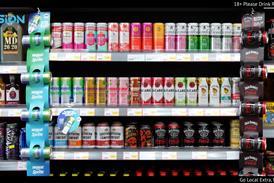


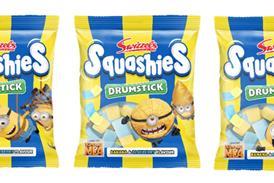

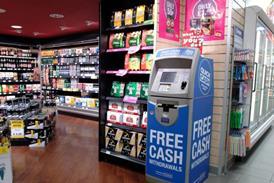








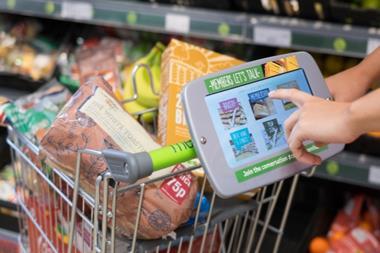

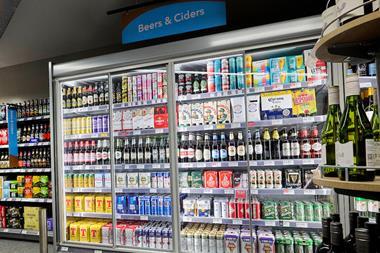

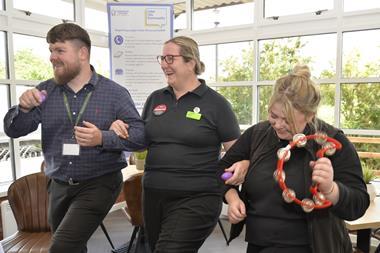
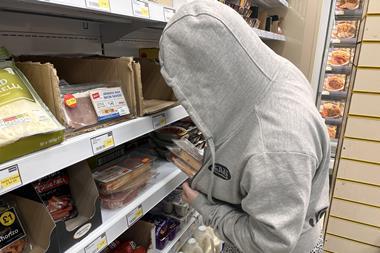
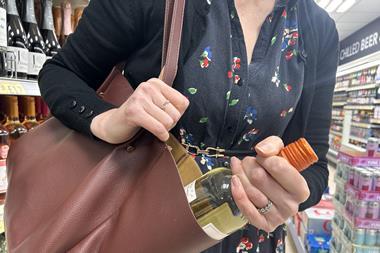
No comments yet